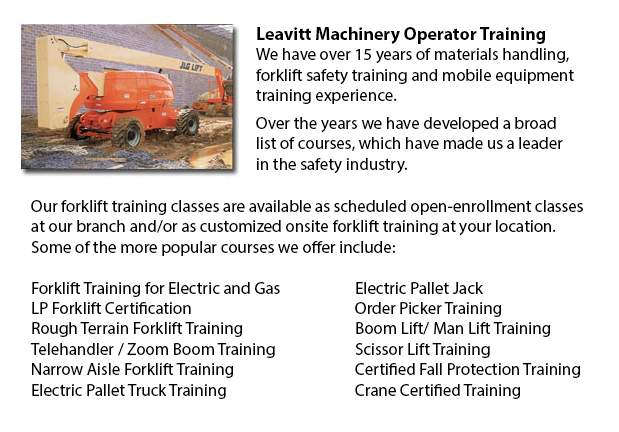
Boom Lift Safey Training Whitby - Boom lifts fall under the type of aerial lifting device or elevated work platform. Most usually utilized in industry, warehousing and construction; the boom lift is very versatile that it could be used in practically any surroundings.
Elevated work platforms enable personnel to access work places that will be inaccessible otherwise. There is inherent danger in the operation of these devices. Workers who operate them should be trained in the correct operating methods. Preventing accidents is vital.
The safety aspects that are involved in using boom lifts are covered in our Boom Lift Training Programs. The course is best for individuals who operate self-propelled boom supported elevated work platforms and self-propelled elevated work platforms. Upon successfully finishing the course, participants will be given a certificate by someone certified to verify the completion of a hands-on evaluation.
Industry agencies, federal and local regulators, and lift manufacturers all play a part in providing information and establishing standards to help train operators in the safe use of elevated work platforms. The most important ways in preventing accidents related to the utilization of elevated work platforms are as follows: checking machines, putting on safety gear and conducting site assessment.
Vital safety considerations when operating Boom lifts:
Operators stay away from power line, observing the minimum safe approach distance (or also known as MSAD). Voltage could arc across the air to find an easy path to ground.
A telescopic boom must be retracted before lowering a work platform in order to maintain stability as the platform nears the ground.
Boom lift workers must tie off to ensure their safety. The harness and lanyard tools need to be connected to manufacturer provided anchorage, and never to other poles or wires. Tying off may or may not be needed in scissor lifts, depending on specific employer guidelines, job risks or local regulations.
Avoid working on a slope that goes beyond the maximum slope rating as specified by the manufacturer. If the slop exceeds requirements, therefore the machine should be winched or transported over the slope. A grade can be measured with no trouble by laying a minimum 3-feet long straight edge or board on the slope. Then a carpenter's level can be laid on the straight edge and raising the end until it is level. The percent slope is obtained by measuring the distance to the ground (also called the rise) and dividing the rise by the length of the straight edge. Next multiply by 100.
-
Wheel Loader Operator Training Whitby
Wheel Loader Operator Training Whitby - To be able to lift considerable loads, industrial cranes use levers and pulleys. In the past, Roman people used cranes to be able to erect large monuments making the origin of these equipment at least two thous... More -
Aerial Lift / Boom Lift / Man Lift / Scissor Lift Training in Whitby
Scissor lifts are lift truck tables which lift up materials and people and supplies vertically. They are normally utilized in commercial, industrial and construction environments. A common use of scissor lifts is for lifting or lowering construction... More -
Manlift Operator Training Whitby
Manlift Operator Training Whitby - A specialized kind of hydraulic platform is called an aerial lift or a man lift. It is intended to lift an individual vertically up and down and thus, is likewise known as a vertical personnel lift. This machinery i... More -
Aerial Lift Ticket Whitby
Aerial Lift Ticket Whitby - A boom truck is frequently recognized by the cable and telephone business vans that have the extended arm folded over their roofs. Commonly, a bucket-like apparatus sits at the extension of extendable arms. Often known as... More -
Crane Training Whitby
Crane Training Whitby - Overhead cranes are otherwise known as bridge cranes. They are a kind of crane which has a line and hook mechanism which runs along a horizontal beam which runs along two widely separated rails. Numerous overhead cranes could... More -
Forklift Certification Schools Whitby
Forklift Certification Schools Whitby - Within North America, forklift certification is mandatory, making forklift training programs essential for both the company and their employees working as operators of forklifts. Forklift training focuses on he... More -
Crane Safety Training Whitby
Crane Safety Training Whitby - Companies and crane drivers need to be aware of the issues connected to crane safety. Legislation provides rules for the safe operation, inspection and maintenance of lifting machinery all around North America. Crane Sa... More -
Overhead Crane Certification Whitby
Overhead Crane Certification Whitby - The overhead crane certification course is a course that is designed to assist trainees, even if they have literacy or language restrictions. The program consists of a classroom theory part and a practical hands-... More

Forklift Training Whitby
TOLL FREE: 1-888-254-6157
Whitby, Ontario
forklifttrainingwhitby.com
Email Us
About Us


